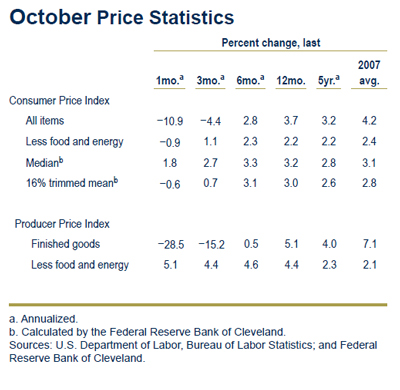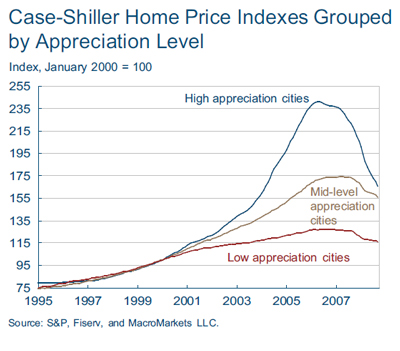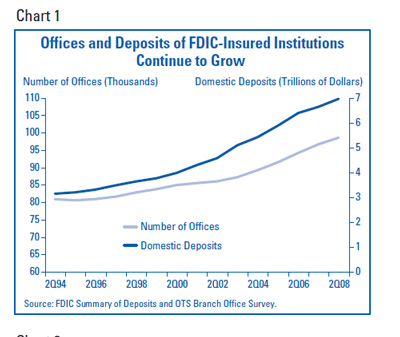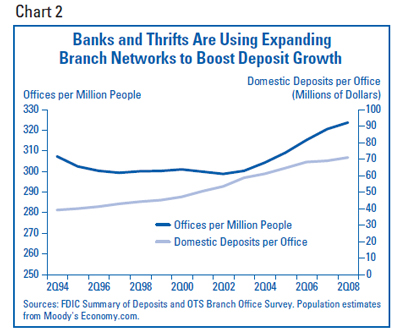S&P cut a whack of bank ratings today, on the following grounds:
- overall assessment of industry risk has been increased
- sensitivity of ratings model to reliance on short term funding has increased
- levels of stress are expected to be higher than typical cycles
- model emphasizing risk-adjusted capital; developing framework that is more risk-sensitive than Basel I and more conservative than Basel II, particularly with respect to market risk and private equity risk.
- “Systemically important” banks will have potential government support recognized
Rating changes were:
- Bank of America, AA- from AA
- Barclays, AA- from AA
- Citibank, A+ from AA
- Credit Suisse, A+ from AA-
- Deutsche Bank, A+ from AA-
- Goldman Sachs, A from AA-
- HSBC, AA (negative outlook) from AA (stable)
- JPMorgan, AA- from AA
- Morgan Stanley, A from A+
- Royal Bank of Scotland, A+ from AA-
- UBS, A+ from AA-
- Wells Fargo, AA+ (negative outlook) from AAA (Watch negative)
Some pretend-managers, very upset by Deutsche Bank’s refusal to execute an out-of-the-money call are very upset:
Deutsche Bank AG’s decision to pass up an opportunity to redeem 1 billion euros ($1.39 billion) of bonds is a setback for financial market stability, according to U.K. and German investment management and insurance groups.
The bank’s choice “will weigh on the markets for months,” said Andreas Fink, a Frankfurt-based spokesman for the BVI German Investment and Asset Management Association, whose 92 members oversee about 1.4 trillion euros of assets.
…
“This is a setback for the stabilization of banking markets and is likely to increase funding costs for banks generally,” Jonathan French, the London-based spokesman for the Association of British Insurers, said in an e-mailed statement to Bloomberg News.
S&P’s note on their bank downgrades stated:
We believe that the difficult operating environment will increase payment deferral risk of most regulated financial institutions’ hybrid capital securities in the U.S. and Europe, including the large systemically important banks covered in this review. This is because the difficult environment is expected to pressure financial performance.
Both Sarkozy and our very own Spend-Every-Penny are grandstanding about what a great banking system there would be if only they ran it. However, not all Canadian politicians have their ideas forgotten! California’s civil servants will get Rae days!
Accrued Interest brings an update on the new Term Auction Loan Facility; it looks like the Fed is desperate to get the securitization market started again.
Via Dealbreaker comes a link to a NYT article, Even Winners May Lose with Madoff:
One client said he invested more than $1 million with Mr. Madoff over a decade ago. As his portfolio rose in value, he took out several million dollars. While his statements showed several million dollars in his Madoff account when the fund collapsed last week, the client still ended up ahead.
…
But previous court rulings regarding financial frauds suggest the winners could be forced to give up some of their gains to losers.
…
Yet even Mr. Madoff’s most fortunate clients may wind up having to give back some of their gains, as investors might have to do in another recent financial fraud, the collapse of the hedge fund Bayou Group in 2005.In the Bayou case, in which investors lost $400 million, a bankruptcy judge ruled that investors who withdrew money even before Bayou collapsed might have to return their profits, and possibly some of the initial investments, to the bankruptcy trustee overseeing the unwinding of Bayou.
The returned money is to be distributed among all investors, who are expected to receive only about 20 to 40 percent of their original investments.
Mr. Madoff’s winning clients are likely to face similar legal challenges. In fact, the Madoff client who profited from his investment spoke on the condition that he not be identified, out of concern that he might be sought out to repay some of his gains to the receiver or bankruptcy trustee for Mr. Madoff.
This is the worst thing that can happen in a fraud like this. The highlighted investor, it would seem, did everything right (except due-diligence, and nobody does that; it’s too expensive and if you do do it, you’ve got to listen to some whiny little geek who can’t even sell investment strategies tell you that you can’t put your [client’s] money into a sure thing with a great story): he regarded his hedge fund investment as high-risk and rebalanced regularly, taking his money off the table. He has adjusted his investment portfolio – and quite possibly his entire lifestyle – as a result of his ethereal winnings and now has to give them back.
I was once part (a very small, clerical level part) of an investigation of a stockbroker who had been naughty. Little Joe & Jane Lunchbucket had gone out and bought houses – retired, even, if memory serves – on the basis that their accounts were worth lots of money and would support them. The firm made good on actual losses, but not on fictitious winnings. It was a really, really bad situation.
There’s a marvellous post regarding the Madoff scandal on Bronte Capital and a thoroughly fascinating letter to the SEC via the WSJ.
What-Debt? is musing about a $30-billion deficit. I don’t have any problems with a deficit of that size, and I support Econbrowser‘s James Hamilton’s call for the stimulus to take the form of unrestricted grants to lower levels of government. I would go farther than that: there are hospitals and charities (a friend specifically mentioned Habitat for Humanity) who can get shovels in the ground next week if they can get some funding. There should be controls, of course, to ensure that the capital projects are actually useful (unlike Japan’s Ibaraki Airport discussed on December 4); but speed in spending the money is important.
No, my problem with a $30-billion deficit is that we don’t have the money already. Planned debt reduction of $3 billion per year for 2010–11 to 2012–13 based on rosy forecasts of continued good times won’t pay for a lot of recessions. But What-Debt? and Spend-Every-Penny have crippled Canada’s ability to maintain a surplus through a normal business cycle, importing the simplistic US Republican thesis that tax cuts are always good, particularly if the cuts are completely bone-headed, like the GST cut. Throw the rascals out!
Another day of very heavy volume and … the sixth straight decline in PerpetualDiscounts, which now yield 8.31%; edging closer to their recent high of 8.63%. The former, current, figure is equivalent to 11.63% interest at the standard conversion factor of 1.4x; given that long corporates yield about 7.50%, the pre-tax interest-equivalent spread is an astonishing 413bp.
PerpetualDiscounts are currently down 1.48% total return on the month; Split-shares have had a better time of it and are now up 13.11% on the month; probably due to the market’s discovery of monthly retraction possibilities.
| Note that these indices are experimental; the absolute and relative daily values are expected to change in the final version. In this version, index values are based at 1,000.0 on 2006-6-30. The Fixed-Reset index was added effective 2008-9-5 at that day’s closing value of 1,119.4 for the Fixed-Floater index. |
|||||||
| Index | Mean Current Yield (at bid) | Mean YTW | Mean Average Trading Value | Mean Mod Dur (YTW) | Issues | Day’s Perf. | Index Value |
| Ratchet | N/A | N/A | N/A | N/A | 0 | N/A | N/A |
| Fixed-Floater | 8.57% | 8.73% | 134,564 | 11.91 | 7 | -0.0141% | 615.9 |
| Floater | 9.49% | 9.56% | 87,210 | 9.98 | 2 | +4.7913% | 342.5 |
| Op. Retract | 5.57% | 6.98% | 163,527 | 4.12 | 14 | +0.3043% | 976.6 |
| Split-Share | 6.68% | 12.27% | 96,353 | 3.94 | 15 | +1.4955% | 924.0 |
| Interest Bearing | 9.88% | 19.63% | 57,409 | 2.66 | 3 | +1.6042% | 750.4 |
| Perpetual-Premium | N/A | N/A | N/A | N/A | N/A | N/A | N/A |
| Perpetual-Discount | 8.17% | 8.31% | 239,331 | 11.12 | 71 | -0.4405% | 680.0 |
| Fixed-Reset | 6.03% | 5.38% | 1,164,322 | 13.83 | 18 | +0.0489% | 1,002.3 |
| Major Price Changes | |||
| Issue | Index | Change | Notes |
| BCE.PR.Z | FixFloat | -5.8824% | |
| HSB.PR.C | PerpetualDiscount | -5.6250% | Now with a pre-tax bid-YTW of 8.51% based on a bid of 15.10 and a limitMaturity. Closing quote 15.15-25, 20×20. Day’s range of 15.10-00. |
| POW.PR.C | PerpetualDiscount | -4.4251% | Now with a pre-tax bid-YTW of 8.31% based on a bid of 17.51 and a limitMaturity. Closing quote 17.73-91, 1×1. Day’s range of 17.50-18.89. |
| CU.PR.B | PerpetualDiscount | -3.9543% | Now with a pre-tax bid-YTW of 7.54% based on a bid of 20.16 and a limitMaturity. Closing quote 20.15-29, 8×5. Day’s range of 20.15-81. |
| BMO.PR.H | PerpetualDiscount | -3.7589% | Now with a pre-tax bid-YTW of 8.35% based on a bid of 16.13 and a limitMaturity. Closing quote 16.18-39, 6×1. Day’s range of 16.05-60. |
| CM.PR.P | PerpetualDiscount | -3.0890% | Now with a pre-tax bid-YTW of 8.80% based on a bid of 16.00 and a limitMaturity. Closing quote 16.21-45. Day’s range of 15.70-16.51. |
| SLF.PR.C | PerpetualDiscount | -2.8754% | Now with a pre-tax bid-YTW of 9.23% based on a bid of 12.16 and a limitMaturity. Closing quote 12.26-49, 3×12. Day’s range of 12.15-10. |
| CM.PR.G | PerpetualDiscount | -2.7778% | Now with a pre-tax bid-YTW of 8.78% based on a bid of 15.75 and a limitMaturity. Closing quote 15.91-00, 8×5. Day’s range of 15.75-50. |
| NA.PR.M | PerpetualDiscount | -2.5600% | Now with a pre-tax bid-YTW of 8.36% based on a bid of 18.27 and a limitMaturity. Closing quote 17.31-60, 5×1. Day’s range of 17.31-60. |
| BNS.PR.N | PerpetualDiscount | -2.5507% | Now with a pre-tax bid-YTW of 7.98% based on a bid of 16.81 and a limitMaturity. Closing quote 16.80-09, 9×18. Day’s range of 16.80-60. |
| CM.PR.K | FixedReset | -2.5352% | |
| BCE.PR.C | FixFloat | -2.5271% | |
| BAM.PR.N | PerpetualDiscount | -2.4390% | Now with a pre-tax bid-YTW of 14.33% based on a bid of 8.40 and a limitMaturity. Closing quote 8.35-58, 1×1. Day’s range of 8.35-93. |
| SBN.PR.A | SplitShare | -2.3502% | Asset coverage of 1.6+:1 as of December 11, according to Mulvihill. Now with a pre-tax bid-YTW of 9.04% based on a bid of 8.31 and a hardMaturity 2014-12-1 at 10.00. Closing quote of 8.30-82, 200×3. Yes, that’s a bid for 20,000 shares. The retraction is highly profitable. |
| MFC.PR.B | PerpetualDiscount | -2.2566% | Now with a pre-tax bid-YTW of 7.74% based on a bid of 15.16 and a limitMaturity. Closing quote 14.51-92, 2×11. Day’s range of 14.75-64. |
| BAM.PR.M | PerpetualDiscount | -2.2196% | Now with a pre-tax bid-YTW of 14.38% based on a bid of 8.37 and a limitMaturity. Closing quote 8.36-49, 10×1. Day’s range of 8.34-70. |
| BNS.PR.K | PerpetualDiscount | -2.1223% | Now with a pre-tax bid-YTW of 7.81% based on a bid of 15.68 and a limitMaturity. Closing quote 15.54-14, 15×15. Day’s range of 15.53-20. |
| PWF.PR.K | PerpetualDiscount | -2.0408% | Now with a pre-tax bid-YTW of 8.79% based on a bid of 14.40 and a limitMaturity. Closing quote 14.46-63, 5×1. Day’s range of 14.30-99. |
| POW.PR.A | PerpetualDiscount | +2.3270% | Now with a pre-tax bid-YTW of 8.37% based on a bid of 16.80 and a limitMaturity. Closing quote 16.37-51, 10×2. Day’s range of 16.51-00. |
| RY.PR.W | PerpetualDiscount | +2.3399% | Now with a pre-tax bid-YTW of 7.48% based on a bid of 16.62 and a limitMaturity. Closing quote 16.96-40, 2×10. Day’s range of 16.00-17.50. |
| BNA.PR.B | SplitShare | +2.6154% | Asset coverage of 1.8+:1 based on BAM.A at 19.27 and 2.4 BAM.A per unit. Now with a pre-tax bid-YTW of 8.82% based on a bid of 20.01 and a hardMaturity 2016-3-25 at 25.00. This is now very clearly trading off the estimated retraction price of 21.69. Closing quote of 20.00-99, 4×1. Day’s range of 19.50-01. |
| FIG.PR.A | InterestBearing | +2.7132% | Asset coverage of 1.0:1 as of December 18, according to Faircourt. Now with a pre-tax bid-YTW of 20.16% based on a bid of 5.30 and a (dubious) hardMaturity 2014-12-31 at 10.00. Closing quote of 5.30-49, 2×7. Day’s range of 5.17-33. |
| BAM.PR.H | OpRet | +2.8571% | Now with a pre-tax bid-YTW of 13.89% based on a bid of 19.80 and a softMaturity 2012-3-30 at 25.00. Closing quote of 20.00-50, 10×5. Day’s range of 19.25-20.50. |
| LBS.PR.A | SplitShare | +2.9216% | Recently discussed on PrefBlog. Now with a pre-tax bid-YTW of 11.70% based on a bid of 7.75 and a hardMaturity 2013-11-29 at 10.00. Closing quote of 7.86-35, 250×1. That’s right, a bid for 25,000 shares; estimated retraction price is 9.41; need I say more? Day’s range of 7.36-99. |
| SBC.PR.A | SplitShare | +3.0263% | Asset coverage of 1.3+:1 as of December 18 according to Brompton. Now with a pre-tax bid-YTW of 12.81% based on a bid of 7.83 and a hardMaturity 2012-11-30 at 10.00. Closing quote of 7.85-98, 30×1. Day’s range of 7.60-00. |
| CL.PR.B | PerpetualDiscount | +3.0769% | Now with a pre-tax bid-YTW of 7.83% based on a bid of 20.10 and a limitMaturity. Closing quote 19.51-07, 2×4. Day’s range of 19.25-20.74. |
| WFS.PR.A | SplitShare | +4.3478% | Asset coverage of 1.2-:1 as of December 11 according to Mulvihill. Now with a pre-tax bid-YTW of 12.88% based on a bid of 8.40 and a hardMaturity 2011-6-30 at 10.00. Closing quote of 8.50-59, 115×8 (estimated retraction price is 9.60). Day’s range of 8.02-50. |
| FTN.PR.A | SplitShare | +4.5455% | Asset coverage of 1.4-:1 as of December 15 according to the company. Now with a pre-tax bid-YTW of 9.78% based on a bid of 7.82 and a hardMaturity 2015-12-1 at 10.00. Closing quote of 8.01-15, 55×5. Day’s range of 7.50-01. |
| BNA.PR.A | SplitShare | +5.1795% | See BNA.PR.B, above. Now with a pre-tax bid-YTW of 18.89% based on a bid of 20.51 and a hardMaturity 2010-9-30 at 25.00. Closing quote of 20.50-29, 2×1. Day’s range of 19.70-22.49 (!). |
| BCE.PR.F | FixFloat | +6.4701% | |
| BAM.PR.K | FixFloat | +9.5313% | |
| Volume Highlights | |||
| Issue | Index | Volume | Notes |
| PWF.PR.J | OpRet | 154,000 | Nesbitt crossed 150,000 at 24.60. Anonymous crossed (?) 10,000 at 24.59. Now with a pre-tax bid-YTW of 5.28% based on a bid of 24.60 and a softMaturity 2015-12-18 at 25.00. |
| MFC.PR.A | OpRet | 119,475 | Desjardins crossed 100,000 at 24.25. Now with a pre-tax bid-YTW of 4.62% based on a bid of 24.26 and a softMaturity 2015-12-18 at 25.00. |
| BNS.PR.L | PerpetualDiscount | 105,980 | Scotia bought 10,300 from TD at 14.35; Nesbitt crossed 35,400 at the same price. Now with a pre-tax bid-YTW of 7.90% based on a bid of 14.55 and a limitMaturity. |
| BNS.PR.M | PerpetualDiscount | 100,658 | Nesbitt crossed 14,200 at 14.55. Now with a pre-tax bid-YTW of 7.90% based on a bid of 14.55 and a limitMaturity. |
| RY.PR.N | FixedReset | 96,515 | RBC was buying! 20,600 from anonymous at 26.00; 25,000 from Nesbitt at 26.00; 19,800 from anonymous at 26.00; and 10,000 from TD at 25.99. Perhaps notable for being the first FixedReset issue for which the Real Genuine 100% YTW Scenario is the five year call. |
There were ninety-four other index-included $25-pv-equivalent issues trading over 10,000 shares today.





